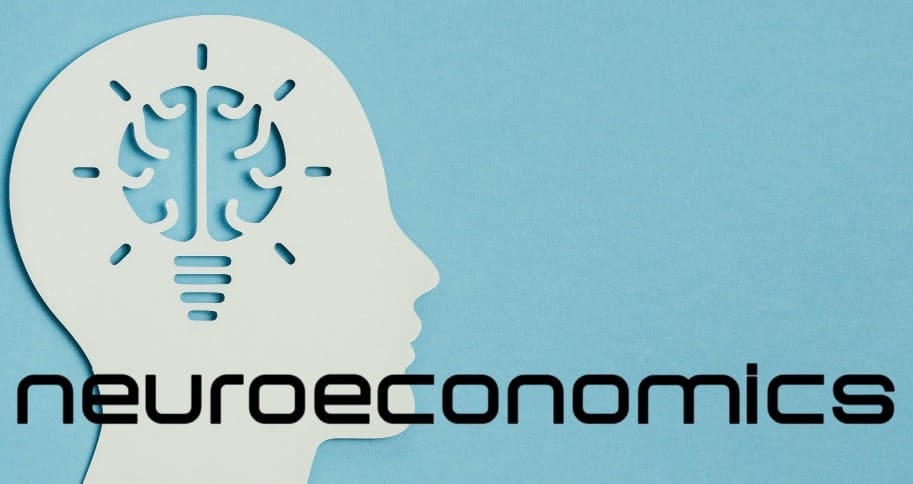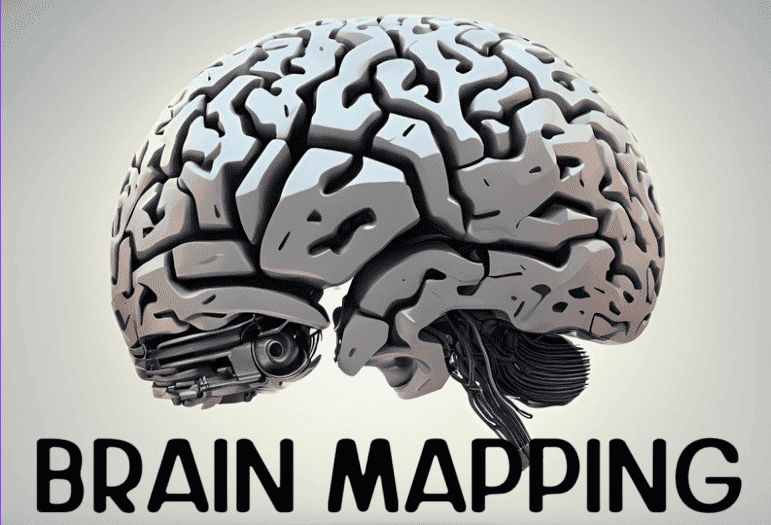
Overview:
In an increasingly complex and interconnected world, understanding the intricacies of human decision-making has never been more critical. To understand what is neuroeconomics, we need to look at an interdisciplinary field that melds neuroscience, economics, and psychology, offering a novel lens through which to examine these processes. By studying the brain’s role in economic decision-making, neuroeconomics seeks to unravel the neural mechanisms that underpin how we evaluate risks and rewards, process information, and ultimately make choices that shape our personal and professional lives.
The convergence of advanced neuroimaging technologies, behavioral experiments, and computational modeling enables researchers to gain unprecedented insights into the cognitive and neural substrates of decision-making. From understanding consumer behavior and improving marketing strategies to informing public policy and enhancing healthcare interventions, the applications of neuroeconomics are vast and varied. As the field continues to grow, it promises to provide a deeper understanding of human behavior, paving the way for innovative approaches that can enhance individual decision-making and societal outcomes.
Contents:
- What is Neuroeconomics
- Understand Neuroeconomics in a layman’s way
- Key components of Neuroeconomics
- Breakdown of how Neuroeconomics works
- Key application areas of Neuroeconomics
- Potential risks and challenges associated with Neuroeconomics
- Futuristic outlook of Neuroeconomics
- Summing Up
So, what is Neuroeconomics:
Neuroeconomics is an interdisciplinary field that combines neuroscience, economics, and psychology to study how people make decisions. It aims to understand the mechanisms behind decision-making processes by examining brain activity and employing methods from each of these disciplines.
Let’s understand it in a layman’s way:
Think of it as a way to explore the “why” and “how” behind our choices, by looking at what happens in our brains when we decide to buy something, save money, or take a risk.
Imagine you’re at a bakery trying to decide between a chocolate chip cookie and a piece of cake. Neuroeconomics studies what parts of your brain light up when you think about the delicious taste of the cookie versus the cake, and how these brain activities influence your final choice. It’s like having a window into your mind’s decision-making process.
Here are some key points to make it clearer:
Brain and Choices: Neuroeconomics looks at how different brain regions are involved when we make choices, especially those involving rewards, risks, and trade-offs.
Emotions and Logic: It studies how emotions (like the pleasure of eating a cookie) and logical thinking (like knowing the cake is healthier) interact in our brain to influence our decisions.
Real-life Applications: This field helps us understand why people sometimes make irrational choices, like overspending or gambling, and can lead to better strategies for saving money, improving marketing techniques, or even creating policies that promote better decision-making.
Key components of Neuroeconomics:
1. Decision-Making Processes:
Neuroeconomics explores how we make decisions, both simple and complex. For instance:
1.A Risk and Reward Evaluation:
When deciding whether to invest in a new venture, people weigh potential profits against possible losses. Neuroeconomics studies which brain regions are active when evaluating these risks and rewards. For example, the ventral striatum, a brain region associated with reward processing, is more active when people anticipate a high reward.
1.B Information Processing:
Consider how you decide on a new smartphone. You might compare features, read reviews, and check prices. Neuroeconomics examines how different brain areas are involved in processing this information and making a final choice. The prefrontal cortex plays a significant role in this cognitive processing.
2. Brain Activity:
Researchers use brain imaging techniques to observe which areas of the brain are involved in decision-making:
2.A fMRI and EEG Studies:
In a study where participants are asked to choose between a guaranteed small reward or a gamble for a larger reward, fMRI might reveal increased activity in the amygdala (which processes emotions) when participants lean towards the gamble, suggesting emotional factors are influencing their decision.
2.B Decision-Making Regions:
The orbitofrontal cortex, involved in evaluating choices and outcomes, shows different activation patterns when people make decisions under conditions of certainty versus uncertainty.
3. Behavioral Economics:
Neuroeconomics integrates behavioral economics to understand how cognitive biases affect decisions:
3.A Cognitive Biases:
Loss Aversion: People tend to prefer avoiding losses rather than acquiring equivalent gains. Neuroeconomics might show that the brain’s response to potential losses is more intense than to gains. For example, if you’re deciding whether to gamble with a potential loss of $50 versus a gain of $50, you might experience more anxiety and brain activity related to loss aversion.
3.B Framing Effects:
The way information is presented can influence decisions. For instance, people are more likely to choose a product advertised as “90% fat-free” rather than “10% fat.” Neuroeconomics investigates how different ways of framing options activate different brain areas and affect decision-making.
4. Utility and Value:
Neuroeconomics examines how individuals assign value to choices and how this affects decisions:
4.A Subjective Value:
Imagine choosing between a $20 gift card now or a $30 gift card in a month. Your brain’s valuation of the immediate versus delayed reward involves regions like the striatum and prefrontal cortex. Studies show that immediate rewards often activate the brain’s reward centers more than delayed rewards.
4.B Decision-Making Under Uncertainty:
When faced with uncertainty, such as deciding whether to take a new job offer with an unknown future, neuroeconomics studies how the brain evaluates the potential benefits and risks. Areas like the anterior insula, associated with anxiety and uncertainty, may be more active in such scenarios.
Breakdown of how Neuroeconomics works:
1. Research Design and Hypothesis Formation:
1.A Identifying Questions:
Researchers start by identifying key questions related to decision-making. These could involve understanding how people evaluate risk, how they value different rewards, or how cognitive biases influence choices.
1.B Formulating Hypotheses:
Based on existing theories from economics, psychology, and neuroscience, researchers formulate hypotheses about how certain decisions are made and which brain regions might be involved.
2. Experimental Methods:
2.A Behavioral Experiments:
Researchers design experiments where participants make decisions in controlled settings. These decisions could involve financial choices, gambling tasks, or consumer preferences. Behavioral data is collected to see how people behave in different scenarios.
2.B Neuroimaging Techniques:
To observe brain activity, researchers use techniques like:
fMRI (Functional Magnetic Resonance Imaging): Measures brain activity by detecting changes in blood flow, providing insights into which brain areas are active during decision-making.
EEG (Electroencephalography): Records electrical activity of the brain, offering high temporal resolution to see how brain activity changes over time during decision processes.
MEG (Magnetoencephalography): Detects magnetic fields produced by neural activity, providing another way to examine brain function during decision-making tasks.
2.C Other Neuroscientific Methods:
TMS (Transcranial Magnetic Stimulation): Temporarily disrupts activity in specific brain regions to study their role in decision-making.
Neurochemical Analysis: Examines the role of neurotransmitters and hormones in influencing decisions.
3. Data Analysis:
3.A Behavioral Data:
Researchers analyze how participants’ choices align with theoretical predictions from economics and psychology. They look for patterns, such as risk aversion, preference consistency, and the impact of framing effects.
3.B Neuroimaging Data:
Brain Region Activation: Identifying which brain areas are activated during different decision-making tasks. For instance, the prefrontal cortex might be more active during complex problem-solving, while the amygdala might be more involved in emotional decisions.
Connectivity Analysis: Studying how different brain regions communicate and coordinate during decision-making.
4. Integrating Findings:
4.A Comparing Behavioral and Neural Data:
Researchers integrate behavioral data with neural data to understand the underlying mechanisms of decision-making. For example, they might correlate the level of activity in reward-related brain areas with the subjective value participants place on different options.
4.B Developing Models:
Combining insights from neuroscience and economics, researchers develop computational models that predict decision-making behavior. These models can incorporate factors like risk preference, time discounting, and social influences.
5. Applications:
5.A Policy and Business:
Insights from neuroeconomics can inform public policy, marketing strategies, and financial advising by understanding how people make economic decisions and how these can be influenced.
5.B Healthcare:
Applications include designing interventions to promote healthier choices and understanding patient decision-making regarding treatments.
5.C Legal and Forensic:
Improving the fairness of trials and understanding the neural basis of criminal behavior.
Key application areas of Neuroeconomics:
1. Consumer Behavior:
1.A Marketing and Advertising:
Understanding how consumers make purchasing decisions can help companies design more effective marketing strategies. For example, neuroeconomics research on how consumers react to different advertising tactics can inform strategies to maximize engagement and conversion rates.
1.B Product Design:
Insights into consumer preferences and decision-making processes can guide product development. For instance, knowing which features or design elements trigger positive emotional responses can lead to products that better meet consumer needs.
2. Investment and Financial Decisions:
2.A Risk Assessment:
Investors’ risk tolerance and decision-making under uncertainty are crucial. Neuroeconomics can reveal how different brain regions are involved in evaluating financial risks and rewards, leading to better investment strategies and financial planning.
2.B Behavioral Finance:
Understanding cognitive biases, such as overconfidence or loss aversion, helps in designing tools and interventions to improve investment decisions and prevent common pitfalls like market bubbles or irrational exuberance.
3. Public Policy and Economics:
3.A Policy Design:
Insights into how people respond to various policy measures can guide the development of more effective policies. For example, understanding how different incentives influence behavior can help in crafting policies related to health, education, or environmental protection.
3.B Behavioral Interventions:
Neuroeconomics can inform the design of interventions that nudge people towards beneficial behaviors. For example, strategies to encourage retirement savings or healthier eating habits can be optimized based on understanding decision-making processes and biases.
4. Healthcare and Medical Decision-Making:
4.A Patient Choices:
In healthcare, neuroeconomics can help understand how patients make decisions about treatments and interventions. Insights into how patients weigh risks and benefits can improve communication strategies and decision aids.
4.B Healthcare Policy:
Neuroeconomic research can inform policies aimed at improving health outcomes by understanding how different incentives and information impact patient behavior and adherence to treatment plans.
5. Legal and Forensic Applications:
5.A Jury Decisions:
Understanding how jurors make decisions can help in designing fairer trials and improving legal strategies. Neuroeconomics can provide insights into how emotions and biases influence judgments.
5.B Criminal Behavior:
Research into the decision-making processes behind criminal behavior can inform criminal justice policies and rehabilitation programs.
6. Education:
6.A Learning Strategies:
Insights from neuroeconomics can help design more effective educational strategies by understanding how students make decisions about learning and study habits.
6.B Motivation and Engagement:
Understanding what motivates students and how they evaluate the value of educational activities can lead to improved teaching methods and educational interventions.
Potential risks and challenges associated with Neuroeconomics:
1. Ethical Issues:
1.A Privacy Concerns:
Brain imaging studies in neuroeconomics often involve sensitive personal data. There are risks related to the privacy and security of this data, especially if it’s used beyond the scope of the original study.
1.B Consent and Autonomy:
Ensuring informed consent is crucial, especially when dealing with vulnerable populations. Participants must fully understand how their data will be used and the potential implications.
1.C Misuse of Findings:
Research outcomes might be misused for manipulative or unethical purposes, such as exploiting cognitive biases to influence consumer behavior in harmful ways.
2. Scientific and Methodological Challenges:
2.A Complexity of Brain Functions:
The brain is highly complex, and correlating specific brain activity with decision-making processes is challenging. The relationships between brain activity and behavior are not always straightforward.
2.B Interpreting Results:
Findings from neuroeconomic studies can be difficult to interpret. Different studies may produce conflicting results due to variations in experimental design, methodologies, or sample populations.
2.C Reproducibility:
Neuroeconomic research, like other scientific fields, faces challenges with reproducibility. Ensuring that findings are consistent across different studies and populations is crucial for validating results.
3. Generalization Issues:
3.A Individual Differences:
Neuroeconomics research often involves studying averages across populations, but individual differences in brain function and decision-making can be significant. Findings may not always generalize to all individuals.
3.B Context Dependence:
Decision-making processes can vary significantly depending on context, such as cultural, social, or economic factors. Research results might not always apply universally across different contexts.
4. Integration with Other Disciplines:
4.A Interdisciplinary Communication:
Neuroeconomics involves integrating insights from neuroscience, economics, and psychology, which can be challenging due to differences in terminology, methodologies, and theoretical frameworks.
4.B Data Integration:
Combining data from different sources and disciplines requires careful consideration to ensure that the integration is valid and meaningful.
5. Practical Implementation:
5.A Cost and Accessibility:
Advanced neuroimaging techniques can be expensive and may not be accessible to all researchers or institutions, potentially limiting the scope of research.
5.B Application of Findings:
Translating complex neuroeconomic findings into practical applications, such as policy or business strategies, requires careful consideration to ensure that the applications are effective and ethical.
Futuristic outlook of Neuroeconomics:
1. Advanced Neuroimaging and Brain-Computer Interfaces
Higher Resolution Imaging:
Future advancements in neuroimaging technology, such as ultra-high resolution fMRI or next-generation EEG, will allow researchers to observe brain activity with greater precision, enabling more detailed mapping of decision-making processes.
Real-Time Brain Monitoring:
Brain-computer interfaces (BCIs) could allow real-time monitoring and analysis of brain activity during decision-making tasks, providing instant feedback and insights into neural mechanisms.
2. Personalized Decision-Making Models
Individualized Insights:
As neuroeconomics advances, personalized decision-making models could be developed based on individual brain patterns and behaviors. This could lead to customized financial advice, tailored marketing strategies, and personalized health interventions.
Neurofeedback and Training:
Neurofeedback techniques could be used to train individuals to make better decisions by providing real-time feedback on their brain activity. This could help reduce cognitive biases and improve rational decision-making.
3. Integration with Artificial Intelligence and Machine Learning
Enhanced Predictive Models:
Integrating neuroeconomic data with AI and machine learning algorithms could improve the accuracy of predictive models for economic behavior, consumer preferences, and market trends.
Automated Decision Support Systems:
AI-powered decision support systems could use insights from neuroeconomics to provide real-time recommendations and guidance in various domains, from finance to healthcare.
4. Applications in Public Policy and Social Good
Behavioral Interventions:
Neuroeconomics could inform the design of more effective behavioral interventions and public policies that promote social welfare, such as programs to encourage saving, healthy eating, or sustainable behaviors.
Education and Training:
Insights from neuroeconomics could lead to improved educational tools and training programs that enhance decision-making skills and reduce the impact of cognitive biases.
5. Ethical and Societal Implications
Ethical Frameworks:
As the field advances, it will be crucial to develop robust ethical frameworks to address issues related to privacy, consent, and the potential misuse of neuroeconomic data.
Societal Impact:
Understanding how societal and cultural factors influence decision-making could lead to more inclusive and equitable policies and interventions that consider diverse perspectives and experiences.
6. Healthcare Innovations
Mental Health and Well-being:
Neuroeconomic research could lead to new approaches for diagnosing and treating mental health disorders by understanding the neural basis of decision-making in conditions like depression, anxiety, and addiction.
Improved Patient Care:
Personalized medicine approaches could benefit from neuroeconomic insights, leading to more effective treatment plans and better patient outcomes by considering individual decision-making processes.
7. Economic and Business Strategies
Market Dynamics:
A deeper understanding of consumer behavior and decision-making could revolutionize market research, product development, and marketing strategies, leading to more effective business practices.
Financial Planning:
Neuroeconomics could enhance financial planning tools and services by providing insights into how people assess risk, value future rewards, and make investment decisions.
8. Interdisciplinary Research and Collaboration
Convergence of Fields:
The future of neuroeconomics will likely see even greater collaboration between neuroscience, economics, psychology, AI, and data science, leading to more holistic and comprehensive insights into decision-making.
Global Research Initiatives:
International collaborations and large-scale research initiatives could drive the field forward, leveraging diverse perspectives and datasets to uncover universal and culture-specific decision-making patterns.
9. Technological Integration
Wearable Technology:
Advances in wearable technology could allow for continuous monitoring of brain activity and decision-making processes in real-world environments, providing richer and more ecologically valid data.
Virtual Reality (VR) and Augmented Reality (AR):
VR and AR could be used to create immersive environments for studying decision-making, allowing researchers to manipulate variables in ways not possible in the real world.
Summing Up:
Neuroeconomics represents a dynamic and rapidly evolving field at the intersection of neuroscience, economics, and psychology, offering profound insights into the mechanisms underlying human decision-making. By leveraging advanced neuroimaging techniques, integrating personalized models, and incorporating AI and machine learning, neuroeconomics is poised to revolutionize how we understand and influence economic behavior. The field’s applications span a wide range of domains, including consumer behavior, investment strategies, public policy, healthcare, and education, each benefiting from a deeper comprehension of cognitive processes and biases.
As the discipline progresses, it will be essential to address ethical considerations, ensuring that advancements are used responsibly and equitably. The potential for personalized decision-making tools, real-time brain monitoring, and enhanced predictive models promises to transform both individual experiences and broader societal outcomes. Through continued interdisciplinary collaboration and technological innovation, neuroeconomics stands to make significant contributions to enhancing decision-making processes, ultimately leading to more effective policies, strategies, and interventions that promote overall well-being and societal progress..
Courtesy Image: FreePik











